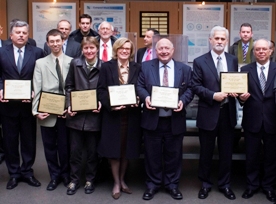
 30
November 2006. The IT department had organised a single
afternoon poster session where all electronics engineers could present
their work to their collegues. This show has attracted around 50 people
and gave a nice mixture of projects from both the accelerator and the
experimental sectors, something that does not happen often as each
domain has their own conferences. TS-DEM presented their work and
services on three panels with the themes: role of DEM, production
processes and quality assurance.
30
November 2006. The IT department had organised a single
afternoon poster session where all electronics engineers could present
their work to their collegues. This show has attracted around 50 people
and gave a nice mixture of projects from both the accelerator and the
experimental sectors, something that does not happen often as each
domain has their own conferences. TS-DEM presented their work and
services on three panels with the themes: role of DEM, production
processes and quality assurance.




 12 May 2006.
DEM decided to equip its assembly workshop with a drying oven to face
new demands related to moisture sensitive devices. This oven is able to
dry components but also electronic assemblies up to 400x400mm. As the
the specialized components needed to assemble the prototypes are
provided by the users, the workshop could not always know the
sensitivity level of the components to be mounted nor how they were
stored.
12 May 2006.
DEM decided to equip its assembly workshop with a drying oven to face
new demands related to moisture sensitive devices. This oven is able to
dry components but also electronic assemblies up to 400x400mm. As the
the specialized components needed to assemble the prototypes are
provided by the users, the workshop could not always know the
sensitivity level of the components to be mounted nor how they were
stored.










